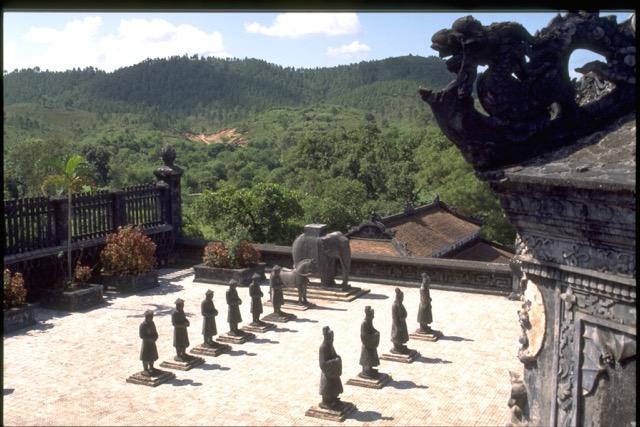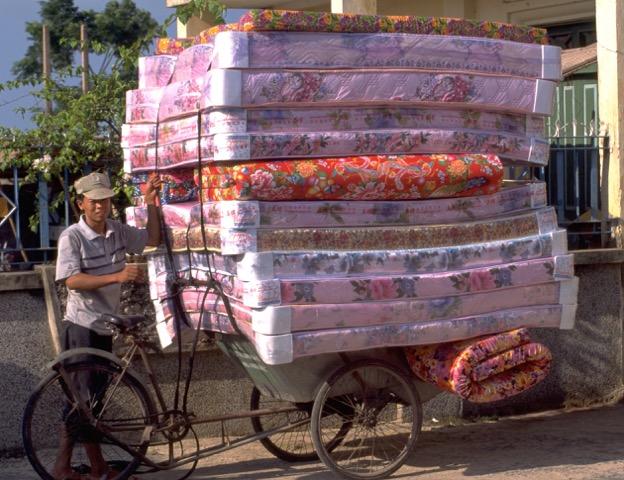Huè, Vietnam and the Beauty Aside the Perfume River
The Perfume river in Huè leads to a variety of fascinating sights along the waterway
4/29/2023

Vietnam is a beautiful country with a rich history and culture, and one of the most fascinating places to visit is Hue. Located in central Vietnam, Huè is known for its citadel, which was once the imperial city of the Nguyen Dynasty. The city is also famous for its scenic Perfume River, which flows through the city and is lined with beautiful temples and pagodas.
In this article, we will explore the history and significance of Hue, the citadel, the Perfume River, and the country of Vietnam.
History of Hue
Huè has a long and rich history dating back over 2,000 years. In the 17th century, the Nguyen family established a powerful dynasty that ruled over Vietnam for over a century. During this time, Huè became the capital of Vietnam, and the city was transformed into a cultural and intellectual center of the country. In the 19th century, Emperor Gia Long ordered the construction of a massive citadel in Huè. The citadel was designed to be a fortified palace complex that would protect the imperial family and symbolize the power and prestige of the Nguyen Dynasty. The citadel was completed in 1832 and remained the center of Vietnamese politics and culture until the end of the Nguyen Dynasty in 1945.
The Citadel of Hue
The citadel of Hue is one of the most impressive examples of Vietnamese architecture and engineering. The citadel covers an area of over 500 acres and is surrounded by a massive wall that is over 10 feet thick and 20 feet high. The wall is punctuated by ten massive gates, each of which is guarded by stone elephants and tigers. Inside the citadel, there are numerous buildings and structures that are of great historical and cultural significance. The most important of these is the Forbidden Purple City, which was the residence of the emperor and his family. The Forbidden Purple City was designed to be a luxurious palace complex that would befit the prestige and power of the Nguyen Dynasty. Other important buildings within the citadel include the Thai Hoa Palace, which was the throne room of the emperor, and the Halls of the Mandarins, which were used for administrative purposes. There are also a number of beautiful gardens, lakes, and courtyards within the citadel that are open to the public.
The Perfume River
The Perfume River is one of the most scenic and important waterways in Vietnam. The river flows through the heart of Huè and is lined with beautiful temples, pagodas, and other cultural landmarks. The river got its name from the fragrance of the flowers that fall into the water from the orchards and gardens that line its banks.
One of the most famous landmarks along the Perfume River is the Thien Mu Pagoda, which is a seven-story temple that dates back to the 17th century. The pagoda is considered to be one of the most beautiful and important religious sites in Vietnam and is a popular destination for tourists and pilgrims alike. Another important landmark along the Perfume River is the Tomb of Emperor Minh Mang. The tomb is located on the west bank of the river and is an impressive example of imperial architecture and design. The tomb is surrounded by beautiful gardens and is a peaceful and serene place to visit.
Vietnam's Excellence of Cuisine
In the late 19th century, Vietnam was a French colony, and with that came a significant cultural influence. One of the most significant aspects of French influence in Vietnam was its food. The French introduced their cuisine, techniques, and ingredients to the Vietnamese, and the result was a unique fusion cuisine that would become an integral part of Vietnam's culinary identity.
The city of Hue, located in central Vietnam, was once the imperial capital of the Nguyen dynasty. It was during this time that the French arrived, and their influence on the local cuisine was felt the most. The French introduced new ingredients such as butter, cream, and cheese, and new techniques such as baking and sautéing. The Vietnamese chefs quickly adapted these techniques and ingredients to create a new cuisine, which would become known as Hue cuisine.
One of the most popular dishes in Hue cuisine is the spring roll, which is known locally as "nem lui." Nem lui is a type of grilled meat skewer wrapped in rice paper with fresh herbs and vegetables. The origin of this dish is unclear, but it is believed to have been inspired by the French dish "rouleau de printemps," which translates to "spring roll."
The French spring roll is made with a thin pastry shell and filled with various meats and vegetables, and it is typically served as an appetizer. Vietnamese chefs took this idea and made it their own, using rice paper instead of pastry and filling it with local ingredients such as pork, shrimp, and herbs. They also added a dipping sauce made from fish sauce, sugar, and lime juice, which gave the dish a distinctively Vietnamese flavor.
Over time, nem lui became a staple in Hue cuisine, and it was served at restaurants and street stalls throughout the city. The dish became so popular that it spread to other parts of Vietnam, and it is now a common sight in Vietnamese restaurants around the world.
Today, the French influence on Vietnamese cuisine is still felt, particularly in Hue cuisine. The fusion of French and Vietnamese ingredients and techniques has resulted in a unique and flavorful cuisine that has won the hearts of food lovers around the world. Whether you are in Hue or any other part of Vietnam, you cannot miss the chance to try a delicious nem lui and taste the history and culture of this fascinating country.
First Cabin Travel - since 1989, First Cabin has offered luxury-styled itineraries to varied destinations with the mainstay of bookings derived from repeat clientele and their enthusiastic referrals.









